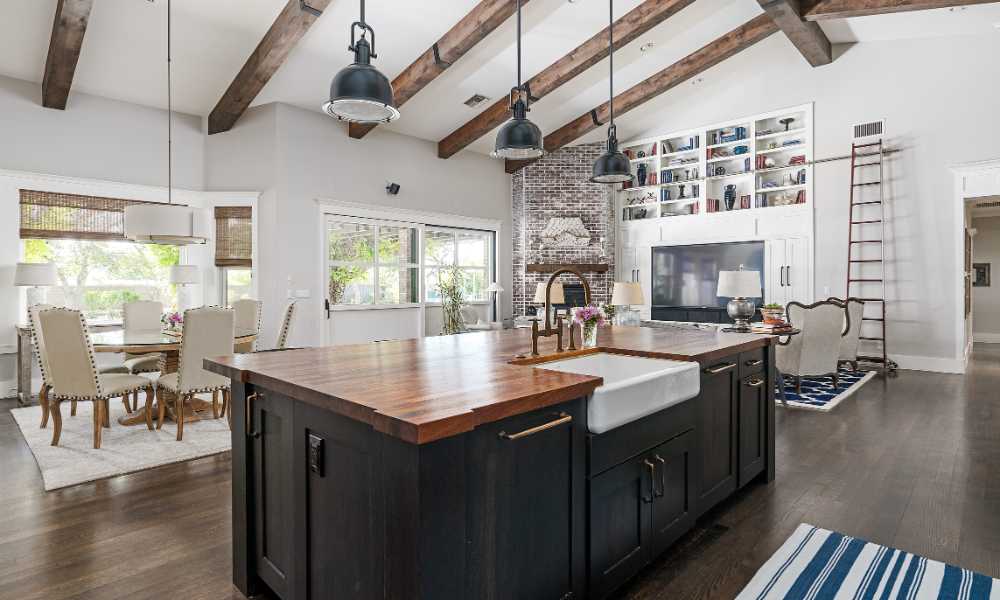A kitchen island is a versatile and functional centerpiece in a modern kitchen, typically a freestanding or built-in structure situated in the center or designated space of the kitchen area. Serving as an extension of the kitchen workspace, it often features a countertop and may include storage cabinets, drawers, or additional amenities. The primary purpose of a kitchen island is to enhance efficiency by providing extra preparation and cooking space, facilitating seamless meal preparation and social interactions.
Beyond its practical utility, a kitchen island contributes to the aesthetic appeal of the kitchen, often becoming a focal point for design and customization. Its benefits extend to increased storage capacity, additional seating options, and the potential incorporation of appliances, transforming it into a multifunctional hub that caters to the diverse needs of a household.
Factors Influencing the Cost
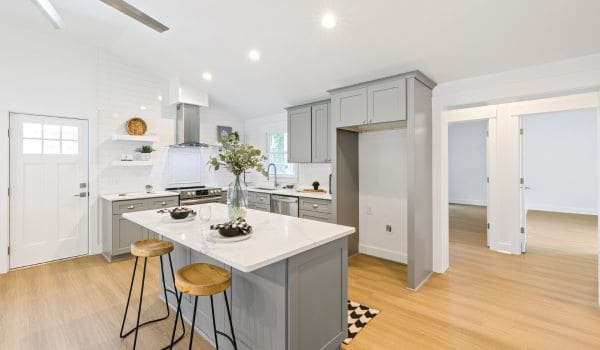
Size and Dimensions
The size and dimensions of a kitchen island play a crucial role in determining its. Small kitchen islands with minimal countertop space and basic features are generally less than their larger counterparts. Customization options, such as unique shapes or dimensions tailored to specific kitchen layouts, can also contribute to increased costs.
Materials Used
The choice of materials significantly influences the overall of kitchen island. Regarding countertops, options range from more affordable materials like laminate to higher-end choices such as granite or quartz. Similarly, the selection of base and cabinetry materials, including hardwoods, veneers, or composite materials, can impact the overall of the island.
Design and Style
The design and style of a kitchen island contribute to its aesthetic appeal. Basic, straightforward designs are generally more budget-friendly, while intricate designs, custom detailing, and unique finishes may increase the overall. Factors such as choosing between contemporary, traditional, or custom styles also influence pricing.
Additional Features
Built-in Appliances
The inclusion of built-in appliances, such as ovens, stovetops, or sinks, adds a layer of functionality but also increases the. High-end appliances contribute to a higher overall price.
Storage Options
The type and amount of storage options, including cabinets, drawers, or specialized storage features, impact the kitchen island.
Seating Arrangements
Incorporating seating into the island, whether through a raised countertop or integrated seating options, can affect the. Higher-end materials and design intricacies in seating arrangements may raise the overall price.
Cost Breakdown
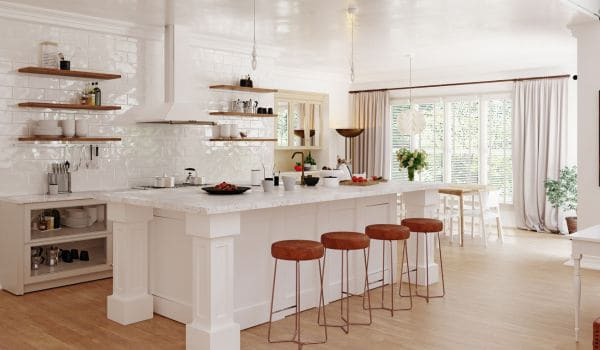
Average Cost Range
The cost of a kitchen island is a variable that hinges on several key factors, including size, materials, design, and additional features. In general, a basic, smaller kitchen island may have a starting price of approximately $500, making it a relatively affordable option for those with budgetary constraints. However, as the size and customization of the island increase, so does the cost. Larger and more intricately designed islands can fall within the range of $2,000 to $10,000 or even exceed these figures, depending on the chosen specifications.
For those seeking high-end or luxury options, the cost of a kitchen island can escalate significantly, with prices soaring to $20,000 or more. This upper echelon often involves the incorporation of premium materials, sophisticated designs, and additional features such as built-in appliances or intricate storage solutions. Ultimately, the wide range of costs underscores the importance of carefully considering individual preferences, needs, and budget constraints when embarking on the journey to enhance the heart of the home with a kitchen island.
Cost Variations Based on Factors Mentioned Above
Size and Dimensions
Larger and more intricately designed islands tend to be on the higher end of the spectrum. Customization, including unique shapes or dimensions, can also contribute to increased costs.
Materials Used
Countertop Materials
The choice of countertop materials significantly affects the. Laminate is more budget-friendly, while granite, quartz, or exotic stones can elevate the price.
Base and Cabinetry Materials
Opting for hardwoods, high-quality veneers, or custom finishes can increase the cost of the island.
Design and Style
Basic vs. Intricate Designs
Basic, utilitarian designs are generally more cost-effective, while intricate designs, custom detailing, and unique finishes can escalate the overall price.
Contemporary, Traditional, or Custom Styles
Customized or highly stylized islands often come with a higher price tag.
Additional Features
Built-in Appliances
Incorporating appliances into the island, such as ovens or stovetops, can significantly raise the cost.
Storage Options
Seating Arrangements
Adding seating options, especially with high-end materials, can contribute to a higher cost.
Tips for Budgeting
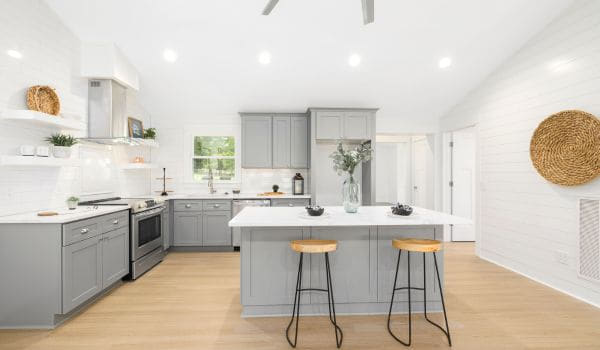
Setting a Budget:
When embarking on a kitchen renovation project, it’s essential to establish a realistic budget that encompasses all aspects of the upgrade, including the kitchen island. Assess your overall renovation budget and allocate a specific percentage to the kitchen island to ensure financial prudence.
By setting clear budgetary limits for the island, you can avoid overspending and maintain balance within your renovation project. Consider the size, materials, and additional features you desire for the island, and allocate funds accordingly.
This proactive approach allows for effective financial planning, ensuring that your kitchen island contributes to the overall transformation without jeopardizing your budgetary constraints. Staying mindful of your allocated percentage helps strike a balance between achieving your design aspirations and managing your renovation costs.
Prioritizing Features Based on Budget Constraints:
Identify the must-have features for your kitchen island and prioritize them. This could include specific materials, size requirements, or essential additional features. Adjustments can be made to accommodate budget constraints.
Exploring Cost-Effective Alternatives:
Research -effective alternatives for materials and design elements. For example, consider laminate countertops that mimic the look of more expensive stones or explore more affordable hardwood alternatives for cabinetry.
Shopping and Installation
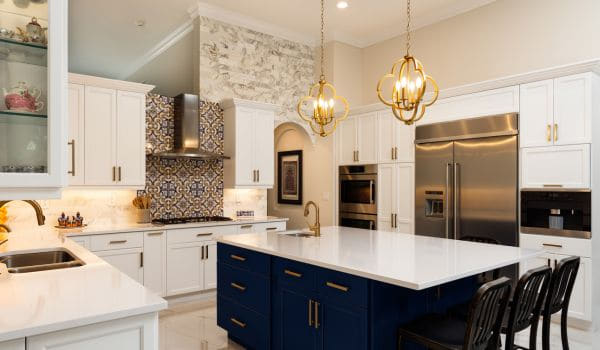
Researching Suppliers and Contractors
Take the time to research reputable suppliers for materials and pre-built islands. Obtain reviews and recommendations to ensure quality and reliability. Additionally, seek out experienced contractors for the installation process.
Obtaining Quotes and Estimates
Collect quotes from multiple suppliers and contractors to compare costs. Ensure that quotes include all necessary components, including materials, labor, and any additional features you desire.
Installation Costs and Considerations
Consideration of installation is paramount when budgeting for a kitchen island. The complexity of the project, the inclusion of additional features, and the expertise of the chosen contractor can all significantly influence the final installation expenses. The intricacy of design, particularly for customized or elaborate islands, may require more time and skill during the installation process, impacting overall costs.
Installation can also vary based on the incorporation of special features such as built-in appliances, intricate storage solutions, or seating arrangements. These elements may necessitate specialized skills and attention to detail, adding to the overall complexity of the installation.
To ensure a successful and durable result, it is crucial to enlist the services of experienced professionals for the installation. Professional contractors possess the necessary expertise to handle the intricacies of the project, ensuring that the kitchen island is seamlessly integrated into the space. This not only guarantees a visually appealing outcome but also enhances the longevity and functionality of the island.
By factoring in installation and prioritizing professional expertise, individuals can safeguard their investment, enjoying a well-crafted kitchen island that meets both aesthetic and practical requirements.
Conclusion
The cost of a kitchen island is influenced by a variety of factors, and understanding these elements is crucial for making informed decisions during the kitchen renovation process. By carefully considering size, materials, design, and additional features, individuals can tailor their kitchen island to meet both their functional needs and budgetary constraints. Budgeting wisely, prioritizing essential features and exploring -effective alternatives are key strategies for creating a stylish and functional kitchen island without breaking the bank. Thorough research, obtaining multiple quotes, and choosing reputable suppliers and contractors are essential steps in ensuring a successful and cost-effective kitchen island project.

